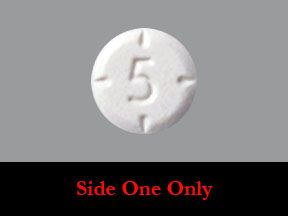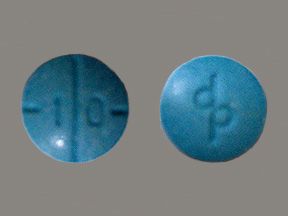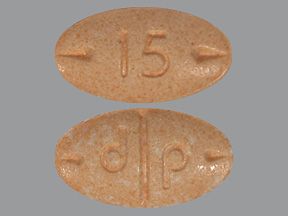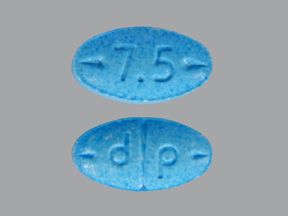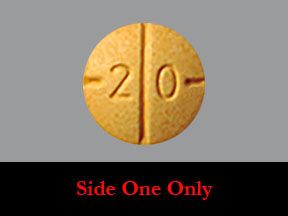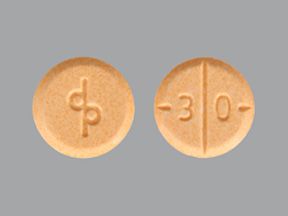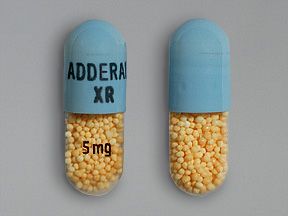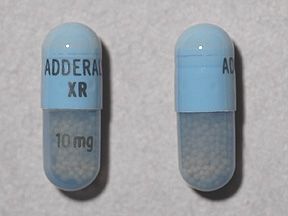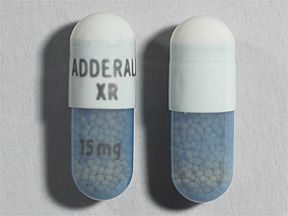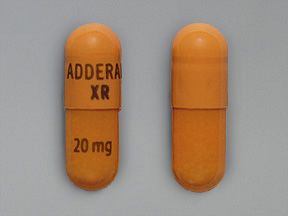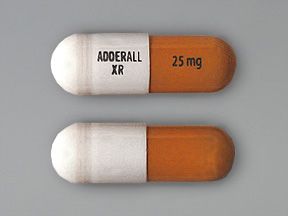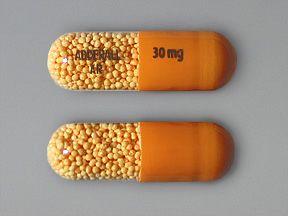Adderall is a prescription medication that contains two drugs: amphetamine and dextroamphetamine. It belongs to a class of medications called stimulants. It’s most commonly used to treat attention deficit hyperactivity disorder (ADHD). It’s also used to treat narcolepsy.
Adderall is considered a first-choice treatment option for ADHD. Studies of Adderall and Adderall XR show that the drugs improve attention and focus, and reduce impulsive behaviors. Between
Adderall is also effective for increasing daytime wakefulness in people with narcolepsy, although there is little related research available.
Adderall and Adderall XR
Adderall comes in two forms:
- Adderall oral tablet, which is an immediate-release (IR)* form of the drug.
- Adderall XR oral capsule, which is an extended-release (ER)* form of the drug.
* IR means the drug is released into your body right away after taking a dose. ER means the drug is gradually released into your body.
Is Adderall a controlled substance?
Yes, Adderall is a controlled substance. This means that it can cause psychological or physical dependence and has the potential for misuse (also called abuse).
The government has created special regulations that determine how controlled substances are prescribed and dispensed. These regulations also require that you get a new prescription from your doctor for each refill.
Availability, October 2022
There is currently a shortage of Adderall in the United States. Learn more here. (Current as of October 2022.)
Adderall comes in two forms:
- Adderall oral tablet, which is an immediate-release (IR)* form of the drug.
- Adderall XR oral capsule, which is an extended-release (ER)* form of the drug.
Both forms of Adderall are available as generic medications. The generic name for the drug in both the tablet and the capsule is amphetamine/dextroamphetamine salts.
Generic drugs usually cost less than the brand-name version. In some cases, the brand-name drug and the generic version may be available in different forms and strengths.
Note: Adderall tablets and capsules have been produced by different manufacturers since they were initially created. Generic amphetamine/dextroamphetamine may sometimes be prescribed instead of the brand-name medication. This article focuses on the brand-name Adderall and Adderall XR medications. Your doctor can provide more information about availability of the brand-name and generic forms of Adderall.
* IR means the drug is released into your body right away after taking a dose. ER means the drug is gradually released into your body.
Adderall ingredients
Adderall contains a mixture of different forms of amphetamine and dextroamphetamine. Specifically, these forms include:
- amphetamine aspartate
- amphetamine sulfate
- dextroamphetamine saccharate
- dextroamphetamine sulfate
Adderall can cause mild or serious side effects. The following list contains some of the key side effects that may occur while taking Adderall. This list doesn’t include all possible side effects.
For more information on the possible side effects of Adderall, or tips on how to deal with a troubling side effect, talk with your doctor or pharmacist.
More common side effects
The more common side effects of Adderall can include:
- lack of appetite
- dry mouth
- trouble sleeping
- headache
- stomach pain
- constipation
- nausea
- weight loss
- anxiety
- dizziness
These side effects may go away within a few days or a couple of weeks. If they’re more severe or don’t go away, talk with your doctor or pharmacist.
Serious side effects
Call your doctor right away if you have serious side effects. Call 911 if your symptoms feel life threatening or if you think you’re having a medical emergency.
Serious side effects and their symptoms can include the following:
- heart problems, including high blood pressure, rapid heartbeat, heart attack, and stroke
- depression
- hallucinations
- impaired or delusional thinking
- agitated or aggressive behavior
- irritability
- blurred vision
- severe allergic reaction
- muscle breakdown called rhabdomyolysis
Long-term effects
Adderall is safe to use long term when taken at doctor-recommended dosages. For many people, common side effects such as loss of appetite, dry mouth, or insomnia are reduced with continued use of the drug. For others, these side effects may continue.
Long-term use of Adderall or other stimulants may cause some changes in the brain, such as decreases in the amount of the chemical messenger dopamine. This seems more likely to happen in people who misuse Adderall in high doses. (Drug misuse is also called abuse.)
When Adderall is misused, long-term use can lead to physical and psychological dependence. Inappropriate use can lead to many serious side effects, including:
- severe insomnia
- fatigue
- depression
- skin disorders
- moodiness or irritability
- symptoms of psychosis such as aggression and hallucinations
- heart damage
- anorexia and unwanted weight loss
Adderall high
When taken at typical doses for conditions such as attention deficit hyperactivity disorder (ADHD), Adderall doesn’t usually cause a feeling of being high.
Some people who take Adderall may experience feelings of being energetic, focused, excited, or self-confident. Feelings of euphoria also sometimes occur. These effects are more likely when the medication is misused. For more information, see the “Adderall misuse (also called abuse)” section below.
Headache
Headache is one of the most common side effects of Adderall. In some studies, headache occurred in up to 26 percent of people who took Adderall XR. This side effect may decrease with continued use of the drug.
Nausea
Nausea is a common side effect of Adderall. In some studies, nausea occurred in 5 percent to 8 percent of people taking Adderall XR. This side effect may decrease with continued use of the drug.
Erectile dysfunction
Most males* who take Adderall don’t experience erectile dysfunction, but some report being less interested in sex. If you experience this side effect and it doesn’t go away, talk with your doctor.
Males who misuse amphetamines such as Adderall can experience erectile dysfunction as well as increases or decreases in sexual desire.
* Sex and gender exist on spectrums. Use of the term “male” in this article refers to sex assigned at birth.
Constipation
Constipation is a common side effect of Adderall. In some studies, constipation occurred in 2 percent to 4 percent of people who took Adderall XR. This side effect may decrease with continued use of the drug.
Hair loss
Some people who take Adderall have reported hair loss. However, it’s not clear how often this occurs or if Adderall was the cause of this effect.
Psychosis
Symptoms of psychosis, including hallucinations, agitation, or disordered thinking, are a rare side effect of Adderall. In some cases, these symptoms have occurred in people taking typical, recommended doses of Adderall.
Symptoms of psychosis are more likely to occur in people who have a history of psychosis before they start taking Adderall. They’re also more common in people who misuse Adderall. (Drug misuse is also called abuse.)
If you have this side effect while taking Adderall, talk with your doctor right away. You may need to stop taking Adderall.
Dry mouth
Adderall XR commonly causes dry mouth in up to 35 percent of people who take it. This side effect may decrease with continued use of the drug.
Sweating
Some people who take Adderall report increased sweating. This seems to occur in about 2 percent to 4 percent of people taking Adderall XR. This side effect may decrease with continued use of the drug.
Insomnia
Insomnia, or trouble sleeping, is one of the most common side effects of Adderall. As much as 27 percent of people who take Adderall XR can have insomnia. This side effect may decrease with continued use of the drug.
Chest pain
People with a healthy heart don’t usually have chest pain while taking Adderall. If you do, it might mean that you have a heart condition.
If you have chest pain after taking Adderall, call your doctor right away.
Fatigue
Fatigue may occur in 2 percent to 4 percent of people who take Adderall XR in commonly prescribed dosages. This side effect may decrease with continued use of the drug.
Fatigue may be more common in people who misuse Adderall, especially in higher doses. Also, people who have become dependent on Adderall can experience extreme fatigue if they stop taking the drug. For more information, see the “Adderall misuse (also called abuse)” section below.
Side effects in children
Some children can have slightly slowed growth in height and weight while taking Adderall. This is usually temporary, and growth typically catches up over time. Your doctor will monitor your child’s growth during treatment with Adderall.
In some cases, if a child’s growth is slowed too much, the child’s doctor may stop their treatment with Adderall.
The Adderall dosage your doctor prescribes will depend on several factors. These include:
- the type and severity of the condition you’re using Adderall to treat
- your age
- the form of Adderall you take
- other medical conditions you may have
Typically, your doctor will start you on a low dosage and adjust it over time to reach the dosage that’s right for you. They’ll ultimately prescribe the smallest dosage that provides the desired effect.
The following information describes dosages that are commonly used or recommended. However, be sure to take the dosage your doctor prescribes for you. Your doctor will determine the best dosage to suit your needs.
Forms and strengths of Adderall and Adderall XR
Adderall comes in these forms and strengths:
- Adderall oral tablet, which is an immediate-release (IR)* form of the drug. Adderall oral tablets are available in the following strengths:
- 5 milligrams (mg)
- 7.5 mg
- 10 mg
- 12.5 mg
- 15 mg
- 20 mg
- 30 mg
- Adderall XR oral capsule, which is an extended-release (ER)* form of the drug. Adderall XR oral capsules are available in the following strengths:
- 5 mg
- 10 mg
- 15 mg
- 20 mg
- 25 mg
- 30 mg
* IR means the drug is released into your body right away after taking a dose. ER means the drug is gradually released into your body.
Dosage for attention deficit hyperactivity disorder (ADHD)
Adderall and Adderall XR dosages for ADHD are described below.
Dosage of Adderall tablet for ADHD
Recommended dosages for Adderall oral tablets to treat ADHD are follows:
- Adults (ages 18 years and older)
- Typical starting dosage: 5 mg once or twice daily.
- Dosage increases: This dosage may be increased by 5 mg each week until it has the desired effect.
- Note: The first dose of the medication should be taken when you first wake up. Any additional doses should be taken every four to six hours.
- Children (ages 6 to 17 years)
- Typical starting dosage: 5 mg once or twice daily.
- Dosage increases: This dosage may be increased by 5 mg each week until it has the desired effect.
- Note: The first dose of the medication should be taken when your child first wakes up. Any additional doses should be taken every four to six hours.
- Children (ages 3 to 5 years)
- Typical starting dosage: 2.5 mg once or twice daily.
- Dosage increases: This dosage may be increased by 2.5 mg each week until it has the desired effect.
- Note: The first dose of the medication should be taken when your child first wakes up. Any additional doses should be taken every four to six hours.
- Children (ages 0 to 2 years)
- Adderall tablet isn’t recommended for treating ADHD in children under the age of 3 years.
Dosage of Adderall XR capsule for ADHD
Recommended dosages for Adderall XR capsules to treat ADHD are follows:
- Adults (ages 18 years and older)
- Typical starting dosage: 20 mg once daily.
- Dosage increases: This dosage may be increased or decreased each week until it has the desired effect.
- Note: The medication should be taken when you first wake up.
- Children (ages 13 to 17 years)
- Typical starting dosage: 10 mg once daily.
- Dosage increases: This dosage may be increased to 20 mg once daily after the first week, if needed.
- Note: The medication should be taken when your child first wakes up.
- Children (6 to 12 years)
- Typical starting dosage: 5 mg or 10 mg once daily.
- Dosage increases: This dosage may be increased by 5 mg or 10 mg each week until it has the desired effect.
- Note: The medication should be taken when your child first wakes up.
- Children (ages 0 to 5 years)
- Adderall XR isn’t recommended for treating ADHD in children under the age of 6 years.
Dosage for narcolepsy
Adderall oral tablet dosages for narcolepsy are described below. (Adderall XR capsules are not approved to treat narcolepsy.)
Dosage of Adderall tablet for narcolepsy
Recommended dosages for Adderall tablets to treat narcolepsy are follows:
- Adults (18 years and older)
- Typical starting dosage: 10 mg once daily.
- Dosage increases: The dosage may be increased by 10 mg each week until it has the desired effect.
- Note: The first dose of the medication should be taken when you first wake up. Any additional doses should be taken every four to six hours.
- Children (12 to 17 years)
- Typical starting dosage: 10 mg once daily.
- Dosage increases: The dosage may be increased by 10 mg each week until it has the desired effect.
- Note: The first dose of the medication should be taken when your child first wakes up. Any additional doses should be taken every four to six hours.
- Children (6 to 11 years)
- Typical starting dosage: 5 mg once daily.
- Dosage increases: The dose may be increased by 5 mg each week until it has the desired effect.
- Note: The first dose of the medication should be taken when your child first wakes up. Any additional doses should be taken every four to six hours.
- Children (ages 0 to 5 years)
- Adderall tablet is not recommended for treating narcolepsy in children under the age of 6 years.
What if I miss a dose?
If you miss a dose in the morning, take it as soon as you can. However, if it’s just a few hours until your next dose, skip the missed dose and take the next one on schedule. When possible, avoid taking makeup doses in the late afternoon or evening because this can cause problems falling asleep at bedtime.
Never try to catch up by taking two doses at a time. This can cause dangerous side effects.
Will I need to use this drug long term?
You might need to use this drug long term. From time to time during your treatment, your doctor may check whether you need to keep taking it. They’ll do this by tapering you off the medication to see if your symptoms return. If symptoms do return, you may need to keep taking the medication.
There are other drugs available to treat your condition. Some may be better suited for you than others. Talk with your doctor to learn more about other medications that may work well for you.
Alternatives for ADHD
Adderall belongs to a class of medications called stimulants. Drugs in this class are usually considered the first choice of medications for treating ADHD. Other stimulants that are options for treating ADHD include:
- amphetamine (Adzenys XR-ODT, Dyanavel XR, Evekeo)
- dextroamphetamine (Dexedrine, ProCentra, Zenzedi)
- dexmethylphenidate (Focalin, Focalin XR)
- lisdexamfetamine (Vyvanse)
- methamphetamine (Desoxyn)
- methylphenidate (Concerta, Daytrana, Methylin, Metadate CD, Quillivant XR, Ritalin, others)
Some nonstimulant medications are also options for treating ADHD. These include:
- atomoxetine (Strattera)
- bupropion (Wellbutrin XL, Wellbutrin SR)
- desipramine (Norpramin)
- clonidine (Kapvay)
- guanfacine (Intuniv)
- imipramine (Tofranil)
- valproic acid
Some people also use herbs and dietary supplements to treat ADHD. For most of these supplements, there is very little research showing that they work, or research findings are inconsistent. Examples of these supplements include:
- iron
- magnesium
- melatonin
- omega-3 fatty acids such as fish oil
- theanine
- zinc
Be sure to talk with your doctor before trying any herb or dietary supplement for treating ADHD.
Alternatives for narcolepsy
For narcolepsy, there are several other medication options available. These include:
- amphetamine (Evekeo)
- armodafinil (Nuvigil)
- dextroamphetamine (Dexedrine, ProCentra, Zenzedi)
- lisdexamfetamine (Vyvanse)
- methylphenidate (Concerta, Methylin, Ritalin)
- modafinil (Provigil)
- sodium oxybate (Xyrem)
Adderall and Vyvanse (lisdexamfetamine) are two medications commonly used to treat ADHD. They’re both stimulants, and they work in a similar way. Despite these similarities, there are some differences between the drugs that might make you prefer one over the other.
Use
Adderall is FDA-approved for treating ADHD and narcolepsy. Vyvanse is approved for treating ADHD and binge eating disorder. Vyvanse is also used off-label to treat narcolepsy. It’s not FDA-approved for this purpose, but there is some scientific evidence that it might help.
Drug forms
Adderall comes in two forms: an immediate-release tablet (Adderall) and an extended-release capsule (Adderall XR).*
Vyvanse is available as a delayed-release capsule and a chewable tablet, both of which are taken once daily. The chewable tablet may be a good option for those who have a hard time swallowing pills.
* Immediate release means the drug is released into your body right away after taking a dose. Extended release means the drug is gradually released into your body.
Effectiveness
Both Adderall and Vyvanse are effective for improving symptoms of ADHD. In fact, they’re both considered to be among the first choices of medications for treating ADHD.
Generally, it’s not clear if one of these medications works better than the other. However, individual people may respond better to one over the other.
Adderall typically works more quickly than Vyvanse but doesn’t usually last as long:
- Adderall works within 30 minutes and lasts for 5 to 7 hours.
- Adderall XR also works within 30 minutes and lasts about 8 to 10 hours.
- Vyvanse typically works within 2 hours and lasts for about 10 hours.
Side effects and risks
Because Adderall and Vyvanse are very similar medications, they also have similar side effects and drug interactions.
Both medications can cause psychological and physical dependence and can be misused. (Drug misuse is also called abuse.) However, Vyvanse may be less likely to be misused. This is because Adderall has a more immediate and intense effect when taken, which might be attractive to people who want to misuse it.
Vyvanse, on the other hand, must be broken down by the body before it takes effect.
Costs
The costs of brand-name versions of Adderall and Vyvanse are similar. However, Adderall is also available in a generic form, while Vyvanse is not.
Generic drugs are typically less expensive than brand-name drugs. But in some cases, the brand-name drug and the generic version may be available in different forms and strengths.
Adderall and Ritalin (methylphenidate) are both commonly used to treat ADHD. They’re both stimulant medications and work in a similar way. However, there are some differences that might make you prefer one over the other.
Use
Both Adderall and Ritalin are FDA-approved for treating ADHD and narcolepsy. Also, they’re both used off-label for treating similar conditions, such as depression and anxiety, in combination with other medications.
Drug forms
Adderall comes in two forms: an immediate-release tablet (Adderall) and an extended-release capsule (Adderall XR).* The Adderall tablet is taken one to three times daily. Adderall XR is taken just once daily.
Like Adderall, Ritalin also comes in two forms: an immediate-release Ritalin tablet and an extended-release capsule (Ritalin LA). Ritalin tablet is taken two to three times daily, and Ritalin LA is taken once daily.
Generic versions of Ritalin also come in other dosage forms, including a chewable tablet and an oral liquid solution. These forms may be a good option for people who have a hard time swallowing pills.
* Immediate release means the drug is released into your body right away after taking a dose. Extended release means the drug is gradually released into your body.
Effectiveness
Both Adderall and Ritalin are effective for improving symptoms of ADHD. They’re both considered to be among the first choices of medications for treating ADHD.
Generally, it’s not clear if one of these medications works better than the other. However, individual people may respond better to one than the other.
Ritalin tablets may work slightly faster than Adderall. However, Adderall works for a slightly longer period of time than Ritalin:
- Ritalin typically works within 20 to 30 minutes and lasts 3 to 6 hours.
- Adderall XR usually works within 30 minutes and lasts about 8 to 10 hours.
- Ritalin LA usually works within about 2 hours and lasts for 7 to 9 hours.
Side effects and risks
Adderall and Ritalin are very similar medications. They also have similar side effects and drug interactions. Both medications can cause psychological and physical dependence and can be misused. (Drug misuse is also called abuse.)
Costs
The cost of brand-name versions of Adderall and Ritalin are similar. The actual amount you pay will vary depending on your health insurance plan.
Adderall and Ritalin are both available in generic forms. The generic name for Ritalin is methylphenidate. Generic drugs are typically less expensive than brand-name drugs. In some cases, the brand-name drug and the generic version may be available in different forms and strengths.
You may wonder how Adderall compares to other drugs used to treat attention deficit hyperactivity disorder (ADHD).
Adderall vs. Concerta
Adderall and Concerta (methylphenidate extended release) are medications that are commonly used for ADHD. They are both stimulant medications and work in a similar way. There are some differences that might make you prefer one over the other.
Use
Both Adderall and Concerta are FDA-approved for treating ADHD. Adderall is also approved for narcolepsy, but Concerta is not. Concerta is used off-label to treat narcolepsy.
Drug forms
Adderall comes in two forms: an immediate-release Adderall tablet and an extended-release capsule (Adderall XR).* The Adderall tablet is taken one to three times daily. Adderall XR is taken just once daily.
Concerta is only available as an extended-release tablet that’s taken once daily.
* Immediate release means the drug is released into your body right away after taking a dose. Extended release means the drug is gradually released into your body.
Effectiveness
Both Adderall and Concerta are effective for improving symptoms of ADHD. They’re both considered to be among the first choices of medications for treating ADHD.
Generally, it’s not clear if one of these medications works better than the other. However, individual people may respond better to one over the other.
One difference between the drugs is how fast they work and how long they last. Adderall may work slightly faster, but Concerta lasts longer:
- Adderall XR usually works within 30 minutes and lasts about 8 to 10 hours.
- Concerta usually works within 30 to 60 minutes and lasts for 8 to 12 hours.
Side effects and risks
Adderall and Concerta are very similar medications. They also have similar side effects and drug interactions. Both medications can cause psychological and physical dependence, and can be misused. (Drug misuse is also called abuse.)
Costs
Both Adderall and Concerta are brand-name drugs. They’re also both available in generic forms. Generic drugs are typically less expensive than brand-name drugs. The generic name of Concerta is methylphenidate extended release.
The brand and generic versions of Concerta appear to be more expensive than Adderall or Adderall XR. The actual amount you pay will vary depending on your health insurance plan.
Adderall vs. modafinil
Adderall and modafinil, a generic drug, are both stimulant medications, but they affect the brain in slightly different ways.
Modafinil increases wakefulness and alertness. Adderall can also stimulate wakefulness and, in people with ADHD, can produce feelings of calm and focus.
Use
Adderall is FDA-approved to treat ADHD and narcolepsy. Modafinil is approved to treat narcolepsy, shift-work sleep disorder, and sleep apnea. Modafinil is used off-label to treat ADHD. This means that it’s not FDA-approved for this purpose, but there is some scientific evidence that it might help.
Drug forms
Adderall comes in two forms: an immediate-release Adderall tablet and an extended-release capsule (Adderall XR).* The Adderall tablet is taken one to three times daily. Adderall XR is taken just once daily.
Modafinil is available as a tablet that’s taken once daily.
* Immediate release means the drug is released into your body right away after taking a dose. Extended release means the drug is gradually released into your body.
Effectiveness
Adderall is considered a first-choice medication for treating symptoms of ADHD. Modafinil is used off-label for ADHD and isn’t considered a first-choice medication for this use. It’s not currently recommended for treating ADHD in guidelines from the
Side effects and risks
Adderall and modafinil are both stimulants and have some similar side effects. However, Adderall is more likely to cause side effects than modafinil.
Both Adderall and modafinil can cause physical and psychological dependence leading to misuse (also called abuse). However, dependence appears to be more common with Adderall than modafinil.
Costs
Adderall and modafinil are both available in brand-name and generic versions. The brand name of modafinil is Provigil. The generic versions of medications typically cost less. But in some cases, they may not be available in the same strengths or forms as the brand-name drug.
The generic version and the brand-name version (Provigil) of modafinil usually cost more than the brand-name and generic versions of Adderall. The actual amount you pay will vary depending on your health insurance plan.
Adderall vs. Strattera
Adderall and Strattera (atomoxetine) are both commonly used to treat ADHD, but they work differently. Adderall is a stimulant medication that increases norepinephrine and dopamine in the brain and produces calm and focus in people with ADHD.
Strattera also works in the brain but doesn’t have stimulant effects. It works as a selective norepinephrine reuptake inhibitor and increases the amount of norepinephrine in parts of the brain. Norepinephrine is a neurotransmitter, a chemical that sends messages between cells.
Use
Adderall is FDA-approved to treat ADHD and narcolepsy. Strattera is only approved to treat ADHD.
Drug forms
Adderall comes in two forms: an immediate-release tablet (Adderall) and an extended-release capsule (Adderall XR).* The Adderall tablet is taken one to three times daily. Adderall XR is taken just once daily.
Strattera is available as a capsule that’s taken once or twice daily.
* Immediate release means the drug is released into your body right away after taking a dose. Extended release means the drug is gradually released into your body.
Effectiveness
Both Adderall and Strattera are effective for treating ADHD.
Adderall, a stimulant, is considered a first-choice treatment for ADHD. Stimulants are the best studied and most effective treatments for ADHD.
Strattera, on the other hand, is typically used for those who don’t want to take a stimulant medication or who can’t take stimulants due to side effects or other reasons.
Side effects and risks
Adderall and Strattera are similar medications. They have some similar side effects and some different ones.
Adderall can cause psychological and physical dependence, and can be misused. Strattera is not known to cause dependence, and isn’t as likely to be misused. But Strattera may cause suicidal thoughts.
Costs
Adderall and Strattera are both available in brand-name and generic versions. The generic name of Strattera is atomoxetine.
Generic drugs usually cost less than the brand-name version. In some cases, the brand-name drug and the generic version may be available in different forms and strengths.
The brand and generic versions of Strattera usually cost more than the brand and generic versions of Adderall. The actual amount you pay will vary depending on your health insurance plan.
Adderall vs. methylphenidate
Adderall and methylphenidate are both commonly used to treat ADHD. They’re both stimulant medications and work in a similar way. There are some differences that might make you prefer one over the other.
Use
Both Adderall and methylphenidate are FDA-approved for treating ADHD and narcolepsy. Both are also used off-label for treating similar conditions, such as depression and anxiety, in combination with other medications.
Drug forms
Adderall comes in two forms: an immediate-release tablet (Adderall) and an extended-release capsule (Adderall XR).* The Adderall tablet is taken one to three times daily. Adderall XR is taken just once daily.
Methylphenidate comes in many different forms, including:
- immediate-release tablet, taken two to three times daily
- extended-release capsule, taken once daily
- extended-release tablet, taken once daily
- liquid solution, taken two to three times daily
- chewable tablet, taken two to three times daily
The chewable and solution forms of methylphenidate may be good options for those who have trouble swallowing pills.
* Immediate release means the drug is released into your body right away after taking a dose. Extended release means the drug is gradually released into your body.
Effectiveness
Both Adderall and methylphenidate are effective for improving symptoms of ADHD. They’re both considered to be among the first choices of medications for treating ADHD.
Generally, it’s not clear if one of these medications works better than the other. However, individual people may respond better to one over the other.
Methylphenidate tablets may work slightly faster than Adderall. However, Adderall works for a slightly longer time than methylphenidate:
- Adderall typically works within 30 minutes and lasts for 5 to 7 hours.
- Methylphenidate typically works within 20 to 30 minutes and lasts 3 to 6 hours.
- Adderall XR usually works within 30 minutes and lasts about 8 to 10 hours.
- Extended-release methylphenidate usually works within about 2 hours and lasts for 7 to 9 hours.
Side effects and risks
Adderall and methylphenidate are very similar medications. They also have similar side effects and drug interactions. Both medications can cause psychological and physical dependence and can be misused.
Costs
Adderall is a brand-name medication. It’s also available as a generic. Generic drugs usually cost less than the brand-name version. In some cases, the brand-name drug and the generic version may be available in different forms and strengths.
Methylphenidate is a generic medication. It’s also available in several brand-name forms, such as Ritalin and Concerta.
Brand-name Adderall costs more than generic methylphenidate. However, generic versions of Adderall cost about the same as generic methylphenidate. The exact cost will depend on your insurance.
Making a choice
Deciding which medication to use may come down to which is covered by your insurance, the drug form that you prefer, and how your body responds to the medication.
Picking the best medication is often a matter of trial and error. If the first drug you try doesn’t work well or causes too many side effects, a different medication might work better. Your doctor will guide you through the process of finding the right medication for you.
The Food and Drug Administration (FDA) approves drugs to treat certain conditions. Adderall has been approved to treat two conditions. However, Adderall is sometimes used for purposes that aren’t approved by the FDA.
Approved uses for Adderall
The FDA has approved Adderall to treat attention deficit hyperactivity disorder (ADHD) and narcolepsy.
Adderall for ADHD/ADD
Both Adderall oral tablets and Adderall XR capsules are FDA-approved for adults and children to treat ADHD. (To learn more about these forms, see the “Adderall dosage” section above.)
Adderall can help reduce hyperactivity and inattentiveness in people with ADHD. ADHD is sometimes referred to as “ADD.” But doctors use the term ADHD to describe this condition.
Adderall for narcolepsy
Adderall oral tablets are also approved to treat narcolepsy. The drug can help reduce daytime sleepiness in people with this condition.
Off-label uses for Adderall
While these uses aren’t approved by the FDA, doctors may prescribe Adderall to treat other conditions besides ADHD and narcolepsy. This means a drug that’s approved to treat one condition is prescribed by a doctor to treat another condition that’s not approved. If you’re taking Adderall without an ADHD or narcolepsy diagnosis, this could be an off-label use.
Depression
Adderall isn’t an antidepressant, but it’s sometimes used off-label to treat depression that doesn’t respond to other treatments. It may also be used to treat depression in people who have both ADHD and depression.
Some people who take Adderall or similar stimulant medication along with antidepressant medication have improved depression symptoms.
However, taking stimulants with antidepressants can increase the risk of side effects. Talk with your doctor before combining Adderall and any antidepressant medication.
Anxiety
Adderall or similar stimulant medications are sometimes prescribed off-label for people with anxiety, especially for those who have both ADHD and anxiety. Some research suggests that combining stimulant medication with antidepressants might improve symptoms of ADHD and anxiety.
Bipolar disorder
Adderall and other stimulants are sometimes prescribed off-label for treating symptoms of depression in people with bipolar disorder. When used for this purpose, stimulants aren’t usually used by themselves, but are combined with other bipolar disorder medications.
Talk with your doctor before combining Adderall with medications used for bipolar disorder.
Other uses that aren’t approved
People may sometimes misuse Adderall without their doctor’s recommendation or prescription. In some cases, this type of misuse of Adderall can lead to taking too much of the drug. You should never use Adderall if it hasn’t been prescribed for you by your doctor.
Weight loss
Adderall can cause a loss of appetite. Because of this side effect, some people misuse Adderall as a weight loss aid.
Studying
Adderall is often misused by people without ADHD to increase focus, concentration, and endurance when studying. This occurs especially often with college students.
However, a recent study suggests that for people taking Adderall without ADHD, Adderall doesn’t improve thinking. In addition, it could worsen memory.
Uses in children
Adderall tablets are approved for treating ADHD in children ages 3 years and older. Adderall tablets are also approved for treating narcolepsy in children ages 6 years and older.
Adderall XR capsules are approved for treating ADHD in children ages 6 years and older.
To learn more about these forms, see the “Adderall dosage” section above.
Talk with your doctor before stopping this medication. If you stop taking it, the symptoms of your condition may return. You may also develop withdrawal symptoms.
Withdrawal symptoms
If you’ve been taking high doses of this medication and you stop taking it, you may have withdrawal symptoms. These can include:
- tiredness
- fatigue
- depression
Consuming alcohol with Adderall can be a dangerous combination. If you drink alcohol, it’s safer to avoid it during Adderall treatment.
Drinking alcohol while taking Adderall can make people feel less drunk than they really are. This can lead to drinking too much. In addition to other effects, drinking too much may worsen symptoms of attention deficit hyperactivity disorder (ADHD), which Adderall is used to treat.
Consuming alcohol with Adderall can also increase the risk of heart-related side effects, such as:
- hypertension (increased blood pressure)
- rapid heartbeat
- arrhythmia (irregular heartbeat)
As with all medications, the cost of Adderall can vary. The actual price you’ll pay depends on your insurance plan, your location, and the pharmacy you use. To learn more about the drug’s cost, see this article.
Before approving coverage for Adderall, your insurance company may require you to get prior authorization. This means that your doctor and insurance company will need to communicate about your prescription before the insurance company will cover the drug. The insurance company will review the prior authorization request and decide if the drug will be covered.
If you’re not sure if you’ll need to get prior authorization for Adderall, contact your insurance company.
Financial and insurance assistance
If you need financial support to pay for Adderall, or if you need help understanding your insurance coverage, help is available.
You can search Medicine Assistance Tool and NeedyMeds to find programs that may help decrease Adderall’s cost. To learn more, visit their websites.
Also, to learn more about saving money on prescriptions, see this article.
Mail-order pharmacies
Adderall may be available through a mail-order pharmacy. Using this service may help lower the drug’s cost and allow you to get your medication without leaving home. Some Medicare plans may help cover the cost of mail-order medications.
If you don’t have insurance, you can ask your doctor or pharmacist about online pharmacy options.
Generic version
Adderall oral tablet and Adderall XR extended-release oral capsule are both available in generic forms. The generic name for the drug in both the tablet and the capsule is amphetamine/dextroamphetamine salts.
A generic drug is an exact copy of the active drug in a brand-name medication. The generic is considered to be as safe and effective as the original drug. And generics tend to cost less than brand-name drugs. To find out how the cost of generic amphetamine/dextroamphetamine compares to the cost of Adderall, ask your pharmacist.
If your doctor has prescribed Adderall and you’re interested in the generic version instead, talk with your doctor. They may have a preference for one version or the other. You’ll also need to check your insurance plan, as it may only cover one or the other.
Taking too much Adderall can increase your risk of severe side effects.
Overdose symptoms
Symptoms of overdose can include:
- confusion
- nausea
- vomiting
- diarrhea
- trouble breathing
- high blood pressure
- rapid heartbeat
- stroke
- seizures
- heart attack
In some cases, taking too much Adderall can be fatal.
What to do in case of overdose
If you think you or your child has taken too much of this drug, call your doctor or seek guidance from America’s Poison Centers at 800-222-1222 or through its online tool. However, if your symptoms are severe, call 911 or go to the nearest emergency room right away.
Overdose treatment
Treatment of overdose will partly depend on the symptoms you have. In many cases, people who have overdosed will be agitated. Medical personnel may give an injection to calm the person.
In some cases, intravenous fluids may be given. Also, tests may be done to check for heart problems, breathing problems, and oxygen levels. And medications may be needed for heart problems or seizures if they occur.
Adderall is used to treat attention deficit hyperactivity disorder (ADHD) and narcolepsy. To learn more, see the “Adderall uses” section above.
Each Adderall tablet or capsule contains two stimulant drugs:
- amphetamine
- dextroamphetamine
Both drugs cause the body to release increased norepinephrine and other neurotransmitters in the brain. Neurotransmitters are chemicals that send messages, or signals, between cells.
Increased amounts of these messengers in the brain can result in more focus and attention. In people with ADHD, it can also result in a calming effect. In people with narcolepsy, it helps with alertness and wakefulness.
How long does it take to work?
Adderall typically begins to work within one to two hours of taking it.
The half-life of a medication refers to the time it takes for half of the medication to be inactivated or removed from the body. Half-life is used as a measure of how long the medication will work or stay in the body.
The half-life of Adderall varies depending on a person’s age, liver and kidney function, and other factors. The half-life of Adderall is typically from 9 to 14 hours.
There haven’t been enough studies done in humans to be sure about how Adderall might affect a fetus if taken during pregnancy. Some research in animals has shown negative effects to a fetus when the drug was given during pregnancy. However, animal studies don’t always predict the way humans would respond.
Some negative effects have been seen in infants born to people who have taken drugs similar to Adderall during pregnancy. These include an increased risk of being born premature, having low birth weight, or having symptoms of drug withdrawal.
Talk with your doctor if you’re pregnant or planning to become pregnant. This medication should be used during pregnancy only if the benefit justifies the potential risk.
You should not breastfeed while taking this medication. Adderall can pass through breast milk and cause side effects in a child who is breastfed.
Tell your doctor if you’re breastfeeding your child. You may need to decide whether to stop breastfeeding or stop taking this medication.
Drug dependence can occur in people who take Adderall. Prolonged use can cause both psychological and physical dependence. This can make it difficult to stop taking the medication, because your body needs the drug in order to function like usual.
In some cases, it can lead to drug misuse and inappropriate usage, resulting in severe side effects. (With misuse, a drug is taken in a way other than how it’s prescribed.)
Misuse of Adderall is a growing epidemic, especially on college campuses. According to the Substance Abuse and Mental Health Services Administration, an estimated 5.1 million people over the age of 12 misused stimulants in 2018.
Many college students use Adderall to help them study. But some research suggests that Adderall doesn’t improve thinking and might even worsen memory.
When Adderall is dispensed from the pharmacy, the pharmacist will add an expiration date to the label on the bottle. This date is typically one year from the date the medication was dispensed.
The purpose of such expiration dates is to guarantee the effectiveness of the medication during this time.
The
How long the medication remains good can depend on many factors, including how and where the medication is stored. Adderall should be stored at room temperature in a tightly sealed and light-resistant container.
If you have unused medication that has gone past the expiration date, talk with your pharmacist about how to properly dispose of it.
Adderall can have some effects on your eyes.
Blurred vision
Although rare, blurred vision or trouble focusing can occur in some people who take Adderall.
If you experience blurred vision that doesn’t go away with continued use of Adderall, talk with your doctor.
Effect on pupils
In some cases, Adderall can temporarily cause your pupils (the black centers of your eyes) to dilate (become bigger). For most people, this isn’t a problem. However, for people with glaucoma, this effect could worsen their condition. People with glaucoma should not take Adderall.
If you experience any changes in your vision that don’t go away with continued use of Adderall, talk with your doctor.
Adderall XR typically works for about 8 to 10 hours. As a result, most people take it just once each day.
Tolerance occurs when your body gets used to the effects of a medication and no longer responds in the same way. In some cases, this can require increasing the dosage of a drug to get the same effect.
Tolerance is more likely to occur with Adderall when the drug is misused. (Drug misuse is also called abuse.)
However, when Adderall is used in recommended therapeutic dosages, tolerance to its treatment effects usually doesn’t occur. Once an effective dosage is determined, that dosage can often be continued for long periods of time without any loss of effectiveness.
Tolerance can also relate to side effects. People who take Adderall for attention deficit hyperactivity disorder (ADHD) sometimes experience side effects when they first start the medication. In many cases, the body develops a tolerance to these side effects, and they go away.
How you take Adderall depends on the form you’re using. Adderall comes in two forms:
- Adderall oral tablet, which is an immediate-release (IR)* form of the drug.
- Adderall XR oral capsule, which is an extended-release (ER)* form of the drug.
* IR means the drug is released into your body right away after taking a dose. ER means the drug is gradually released into your body.
Timing
Below is information on the timing of taking doses of either Adderall or Adderall XR.
- For Adderall tablets:
- The tablets are usually taken one to three times daily. The first dose should be taken in the morning after first waking up. Any additional doses should be spread out and taken every four to six hours.
- Try not to take Adderall tablets later in the evening. This can cause trouble falling asleep at bedtime.
- For Adderall XR capsules:
- The capsules are taken once daily. They should be taken in the morning after first waking up.
- You should not take Adderall XR in the afternoon. This can cause trouble falling asleep at bedtime.
Adderall on an empty stomach
Here’s information on taking Adderall and Adderall XR with or without food:
- Adderall tablets and Adderall XR capsules can be taken on an empty stomach.
- Both forms can also be taken with food. Some people prefer to take them with food to help prevent stomach upset.
Handling
Here’s information on handling Adderall tablets and Adderall XR capsules:
- Adderall tablets can be split or crushed.
- Adderall XR capsules should not be split, crushed, or chewed. If you have trouble swallowing, you can open the capsule and sprinkle the contents onto a spoonful of applesauce. Be sure to eat the applesauce right away.
It’s important to talk with your doctor if you’re thinking about quitting or stopping Adderall treatment. They can help you stop taking Adderall safely.
Stopping Adderall can lead to withdrawal. This refers to unpleasant symptoms that occur when you stop taking a drug that your body is used to. Stopping Adderall can also cause symptoms of your condition to return. See the “Adderall withdrawal” section above for details.
Be sure to talk with your doctor if you’re interested in quitting Adderall.
Adderall is a stimulant that works in the brain to treat symptoms of attention deficit hyperactivity disorder (ADHD).
The exact way it works to treat ADHD isn’t entirely clear. What is known is that Adderall affects chemical messengers in the brain called neurotransmitters, such as norepinephrine and dopamine.
The effects on these neurotransmitters are thought to help control certain impulses and provide a calming effect in people with ADHD. They also cause increased focus and attention.
In people without ADHD, Adderall can cause wakefulness. It can also cause feelings of physical and mental energy, and a sense of confidence.
One
Adderall contains amphetamine and dextroamphetamine. For people who take Adderall, drug screening tests will be positive for amphetamine.
The length of time Adderall stays in your system varies from person to person, but it’s usually two to four days.
If you take Adderall for a medical condition, consider disclosing this information before completing a drug screening related to work or athletics.
If you’re an athlete, it’s important to know that stimulants, including Adderall, are often prohibited. For example, the NCAA lists stimulants such as Adderall as prohibited during sport. If you’re taking Adderall for a medical condition such as attention deficit hyperactivity disorder (ADHD), be sure to discuss it with your coach.
Adderall can interact with several other medications. It can also interact with certain supplements as well as some foods.
Different interactions can cause different effects. For instance, some can interfere with how well a drug works, while others can cause increased side effects.
For more information on Adderall’s interactions, see this article.
Adderall and other medications
Below is a list of medications that can interact with Adderall. This list doesn’t contain all drugs that may interact with Adderall.
Before taking Adderall, be sure to tell your doctor and pharmacist about all prescription, over-the-counter, and other drugs you take. Also tell them about any vitamins, herbs, and supplements you use. Sharing this information can help you avoid potential interactions.
If you have questions about drug interactions that may affect you, ask your doctor or pharmacist.
Acid-reducing drugs
Medications that reduce the amount of acid in your stomach can increase the amount of Adderall your body absorbs. This can raise your risk of side effects. Examples of acid-reducing drugs include:
- antacids that contain calcium carbonate, aluminum hydroxide, magnesium hydroxide, or sodium bicarbonate (such as Gaviscon, Maalox, and Tums)
- H2 receptor blockers such as:
- cimetidine
- famotidine (Pepcid)
- nizatidine (Axid)
- ranitidine (Zantac)
- proton pump inhibitors such as:
- esomeprazole (Nexium)
- lansoprazole (Prevacid)
- omeprazole (Prilosec)
- pantoprazole (Protonix)
- rabeprazole (Aciphex)
Monoamine oxidase inhibitors (MAOIs)
Taking Adderall with MAOIs can increase the risk of dangerous side effects, such as very high blood pressure, chest pain, severe headache, and increased body temperature. Adderall should not be taken within 14 days of using an MAOI.
Examples of MAOIs include:
- isocarboxazid (Marplan)
- linezolid (Zyvox)
- phenelzine (Nardil)
- selegiline (Emsam, Zelapar)
- tranylcypromine (Parnate)
Serotonergic drugs
Taking Adderall with medications that increase serotonin in your body can raise your risk of developing serotonin syndrome, a drug reaction that can be dangerous. If you take any of these medications, you may need to start with a lower dosage of Adderall.
Examples of medications that increase serotonin include:
- antidepressants, including:
- selective serotonin reuptake inhibitors (SSRIs) such as escitalopram (Lexapro), fluoxetine (Prozac), paroxetine (Paxil, Pexeva, Brisdelle), and sertraline (Zoloft)
- serotonin-norepinephrine reuptake inhibitors (SNRIs) such as duloxetine (Cymbalta), venlafaxine (Effexor), and desvenlafaxine (Pristiq)
- tricyclic antidepressants such as amitriptyline, desipramine (Norpramin), and imipramine (Tofranil)
- monoamine oxidase inhibitors (MAOIs) such as phenelzine (Nardil) and selegiline (Emsam, Zelapar)
- certain opioids such as fentanyl (Fentora, Abstral, others) and tramadol (Ultram, Conzip)
- the anxiety medication buspirone
- lithium
Tricyclic antidepressants
Taking Adderall with a tricyclic antidepressant can increase the effects of Adderall in your body and increase your risk of heart-related effects and other side effects. Examples of tricyclic antidepressants include:
- amitriptyline
- desipramine (Norpramin)
- imipramine (Tofranil)
- nortriptyline (Pamelor)
- protriptyline (Vivactil)
Drug metabolism inhibitors
Taking Adderall with certain medications that block how the body breaks down Adderall can result in an increased risk of serious side effects, including serotonin syndrome. If you take these medications, you may need to start with a lower dosage of Adderall. Examples of these medications include:
- fluoxetine (Prozac)
- paroxetine (Paxil, Pexeva, Brisdelle)
- quinidine (Quinora)
- ritonavir (Norvir)
Adderall and Xanax
Adderall and Xanax (alprazolam) are sometimes prescribed together, especially for those who have both ADHD and anxiety. Adderall helps improve concentration and focus, while Xanax is calming and can help relieve symptoms of anxiety.
These medications can be used together safely when taken as prescribed by your doctor.
Adderall and Prozac
Adderall and Prozac (fluoxetine) are sometimes prescribed together, especially for people who have both ADHD and other conditions. These conditions include depression, anxiety, panic attacks, obsessive-compulsive disorder, or premenstrual dysphoric disorder.
Adderall helps improve concentration and focus in people with ADHD. Prozac is a selective serotonin reuptake inhibitor (SSRI) antidepressant that can improve symptoms of depression. It’s also used to treat anxiety, panic attacks, obsessive-compulsive disorder, premenstrual dysphoric disorder, and other conditions.
These medications should only be taken together if your doctor prescribes them. Combining Adderall and Prozac can increase your risk of developing serotonin syndrome, a drug reaction that can be dangerous.
To prevent this reaction, your doctor may need to decrease your dosage of Adderall or Prozac.
Adderall and Zoloft
Adderall and Zoloft (sertraline) are sometimes prescribed together, especially for people who have both ADHD and other conditions such as depression, anxiety, panic attacks, obsessive-compulsive disorder, or premenstrual dysphoric disorder.
Adderall helps improve concentration and focus in people with ADHD. Zoloft is a selective serotonin reuptake inhibitor (SSRI) antidepressant that can improve symptoms of depression. It’s also used to treat anxiety, panic attacks, obsessive-compulsive disorder, premenstrual dysphoric disorder, and other conditions.
These medications should only be taken together if your doctor prescribes them. Combining Adderall and Zoloft can increase your risk of developing serotonin syndrome, a drug reaction that can be dangerous.
To prevent this reaction, your doctor may need to decrease your dosage of Adderall or Zoloft.
Adderall and herbs and supplements
Adderall can interact with certain vitamins, supplements, or herbs you may be taking.
Vitamin C
Taking vitamin C supplements can make your stomach more acidic and can decrease the amount of Adderall your body absorbs. This can make Adderall less effective. Do not take Adderall within one hour of taking vitamin C.
Supplements that affect serotonin
Supplements that affect serotonin can increase your risk of developing serotonin syndrome. Examples of these supplements include:
- 5-HTP
- garcinia
- L-tryptophan
- St. John’s wort
Cannabis
Taking Adderall with cannabis (marijuana) can increase your risk of heart-related side effects. These include rapid heartbeat, arrhythmia (irregular heartbeat), and heart attack.
Adderall and foods
Adderall may interact with certain foods you may eat.
Fruit juices
Fruit juices are often acidic and can decrease how much Adderall your body absorbs. This can make Adderall less effective. Do not take this medication within one hour of drinking fruit juices such as orange or grapefruit juice.
Adderall and coffee
Caffeine in foods and beverages such as coffee might add to the stimulant effects of Adderall. This can increase the risk of stimulant-related side effects such as anxiety, nervousness, trouble sleeping, and others.
While taking Adderall, you should avoid consuming large amounts of coffee or other drinks that contain caffeine.
Adderall comes with several warnings.
Boxed warning: Risk of misuse (also called abuse)
This medication has a boxed warning from the Food and Drug Administration (FDA). This is the strongest warning that the FDA requires. A
Adderall and similar medications have the potential to be misused. (With misuse, a drug is taken in a way other than how it’s prescribed.)
Taking these medications for long periods of time can cause psychological and physical dependence. (With dependence, your body needs a drug in order to function like usual.) This may lead to obtaining Adderall illegally and using it for nonmedical purposes.
Misuse of Adderall may cause serious side effects, including heart problems and death.
Other warnings
Before taking Adderall, talk with your doctor about your health history. Adderall may not be appropriate for you if you have certain medical conditions. These include:
- Circulation problems. Adderall can decrease blood flow to your fingers and toes.
- Heart disease. Adderall can increase your blood pressure and heart rate. If you have a serious heart condition, Adderall might increase your risk of sudden death, heart attack, and stroke. It might also worsen high blood pressure or an irregular heartbeat. If you have a heart condition, your doctor may want to evaluate your heart function before prescribing this medication.
- History of drug misuse or addiction. Adderall can be highly addictive and is often misused. See the “Adderall misuse (also called abuse)” section above for more information.
- Glaucoma. Adderall can worsen your vision if you have glaucoma.
- Mental health disorder. Adderall can worsen symptoms of some mental health disorders, including anxiety, bipolar disorder, and psychotic disorders.
- Seizures. If you have seizure disorder, Adderall could increase your risk of having a seizure.
- Thyroid problems. Adderall can worsen symptoms of an overactive thyroid, such as an abnormal heartbeat.
- Tics or Tourette’s syndrome. Adderall can worsen movement or verbal tics.
Adderall can be poisonous for pets, including dogs and cats. Dangerous effects can include:
- agitation
- high blood pressure
- high body temperature
- panting
- seizures
Be sure to store your medication in a safe place that’s out of reach of pets. If you think your pet has consumed this medication, call your veterinarian right away.
The following information is provided for clinicians and other healthcare professionals.
Clinical pharmacology
Adderall contains amphetamine and dextroamphetamine. Amphetamines are sympathomimetic amines that stimulate the central nervous system (CNS). Amphetamines stimulate norepinephrine and dopamine release in the CNS, increasing their levels in the extraneuronal space.
Amphetamines decrease fatigue, increase alertness, and cause mild euphoria. Outside the CNS, amphetamines increase blood pressure and stimulate heart rate and respiration.
Pharmacokinetics and metabolism
After an oral dose of Adderall, peak plasma concentrations occur in about three hours. For Adderall XR, the peak concentration occurs in about seven hours.
Amphetamines are excreted in the urine. Typically, 30 percent to 40 percent of the administered dose is recovered in the urine as amphetamine, and 50 percent is recovered as the inactive metabolite alpha-hydroxy-amphetamine.
The half-life of Adderall and Adderall XR varies by age:
- Children 6 to 11 years: 9 to 11 hours
- Children 12 to 18 years: 11 to 14 hours
- Adults: 10 to 13 hours
Contraindications
Adderall is contraindicated in the following conditions:
- advanced arteriosclerosis
- symptomatic cardiovascular disease
- moderate-to-severe hypertension
- hyperthyroidism
- hypersensitivity or idiosyncrasy to the sympathomimetic amines
- glaucoma
- agitated states
- history of drug misuse
- during or within 14 days following the administration of monoamine oxidase inhibitors due to risk of hypertensive crisis
Misuse and dependence
Amphetamines contained in Adderall are extensively misused. People taking amphetamines can develop extreme psychological dependence and tolerance. In some cases of amphetamine misuse, people have used doses several times higher than what is recommended.
In those dependent on amphetamines, severe withdrawal can occur when the medication is abruptly stopped. Withdrawal symptoms can include extreme fatigue, depression, and sleep disruption.
Symptoms of chronic misuse or intoxication with amphetamines can include:
- dermatoses
- hyperactivity
- insomnia
- moodiness or irritability
- psychosis in severe cases
Storage
Adderall should be stored in a tightly closed, light-resistant container. Storage temperature should be 68°F to 77°F (20°C to 25°C).
Disclaimer: Medical News Today has made every effort to make certain that all information is factually correct, comprehensive, and up to date. However, this article should not be used as a substitute for the knowledge and expertise of a licensed healthcare professional. You should always consult your doctor or another healthcare professional before taking any medication. The drug information contained herein is subject to change and is not intended to cover all possible uses, directions, precautions, warnings, drug interactions, allergic reactions, or adverse effects. The absence of warnings or other information for a given drug does not indicate that the drug or drug combination is safe, effective, or appropriate for all patients or all specific uses.

